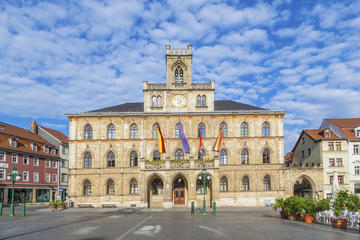Weimar
TIME : 2016/2/22 11:04:54

Weimar
As the cultural heart of the German enlightenment from the late-17th century to 1800, the city of Weimar was a source of inspiration for intellectuals from across Europe. Once the home of creative giants including the writer Goethe and dramatist Friedrich Schiller, fans of their work still descend on the city of 65,000 today.
Weimar was also the home of famous 19th-century composers like Franz Liszt, who opened the Liszt School of Music here, and into more modern times, the Bauhaus architectural movement was founded in Weimar in 1919 by Walter Gropius.
Forty miles southwest of Leipzig in the Thuringia region, you’ll see plaques and statues dedicated to the famous Germans who once lived here, like Bach and Nietzsche. Wander the historic streets and parks full of Classical Weimar UNESCO World Heritage sites that include Goethe’s Garden and Garden House, Schiller’s House, Anna Amalia Library, and Park on the Ilm. Weimar’s Bauhaus buildings have also been given UNESCO World Heritage status.
Weimar was also where Germany’s first democratic constitution was signed after WWI, and the city’s name will always be tied to Germany’s ill-fated Weimar Republic period from 1918-1933.
Practical Info
With direct connections from Leipzig and Berlin, the easiest way to reach Weimar is by car or train.
